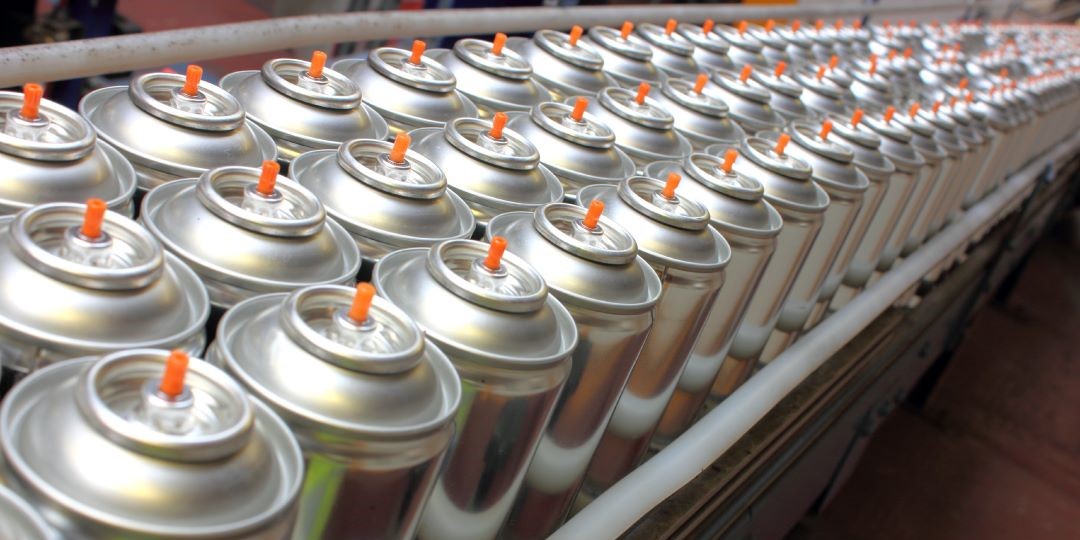Aerosol Cans
A Lesson in Environmental Regulations, Math…and Shopping
Aerosol cans have been around forever. From the spray paint used to make that awesome pinewood derby car, to the Aqua Net big hair of the ‘80s, and even the spritz of cooking spray to keep that perfect weekend pancake from sticking, it seems like we have a spray can for every need. In the United States, we use over three billion spray cans each year1.
So, you coated that fry pan, the can is empty – what to do? Like most households, the can gets tossed in the trash under the kitchen sink and ends up at the curb on trash day. Out of sight, out of mind. But is that what we can do at work too?
No. Aerosol cans, like many other items that are typically tossed away in household trash, have specific regulations that govern their disposal in the workplace.
Anatomy of an Aerosol Can
A typical aerosol can is composed of three parts:
- the can,
- the propellant, and
- the actual product.
Most cans are made of a recyclable metal and do not pose a hazard. The propellant, however, is typically propane, butane, another hydrocarbon, or carbon dioxide. These materials may be flammable and hazardous themselves. Leftover propellant in a spray can may still be pressurized and present a hazard if the can is heated or comes under pressure (like when the trash truck compresses its load).
The actual product in the container can vary widely. Your can of Cheese Whiz may not be hazardous (that may be up to debate, depending on your dietary preferences), but the can of WD-40 is flammable and considered a hazardous product. Since each can has the potential to be hazardous, disposal will vary depending on the contents. In this discussion, we can look at multiple disposal methods for aerosol cans containing hazardous materials.
Hazardous Waste
Aerosol cans that contain hazardous materials and still contain product, but are no longer usable (clogged nozzle, ran out of propellant before product, out of date, etc.) can always be managed as a hazardous waste. If a facility elects to handle aerosol cans as a hazardous waste, they must comply with the full hazardous waste regulations in 40 CFR 261. This would include the proper characterization of the material to be disposed, following proper storage, recordkeeping, and disposal requirements.
The weight of the material disposed (including the can) would count against the monthly hazardous waste generation and impact the facility’s Hazardous Waste Generator status.
Hazardous Waste “Lite”
Some facilities have previously opted to minimize the amount of hazardous waste generated by depressurizing their aerosol cans and collecting the liquid contents for disposal. The evacuated cans are recycled as scrap and only the liquid contents are collected and managed as a hazardous waste. Although the “lite” method creates less hazardous waste, there are still requirements for specific equipment to be utilized to puncture the aerosol cans.
Air filters provided with the depressurizing system must be changed according to equipment instructions, and some states may regulate the VOC or HAP air emissions from the drum. The facility must have written procedures for the activity. The liquids collected must be compatible in the collection pail or drum. Employees must be trained on the proper use and maintenance of the depressurizing device. The resulting collected liquids are still managed under the full hazardous waste regulations and count against monthly hazardous waste generation.
Since it may take a considerable amount of time before filling and disposing of the collection drum, good recordkeeping is required to demonstrate that the entire drum of waste was not generated in a single month, impacting the generator status. Regulations specific to can depressurizing are found in 40 CFR 273.13(e).
Universal Waste
The EPA added aerosol cans to 40 CFR 273 as a Universal Waste on February 7, 2020. Universal Wastes are a special classification of Hazardous Waste – items that are common, and regulations are created to encourage proper handling of these items. If a waste stream that is declared to be Universal Waste is handled according to those regulations, they are then not subject to the full Hazardous Waste requirements. There is still paperwork, tracking, container labeling, training and annual shipping requirements.
Aerosol cans may be collected, do not need to be depressurized or sorted according to content (EPA assumes that the intact can will prevent mixing of incompatible chemicals). Recycling of the content and empty cans is completed by the company that picks up the can, instead of at the facility. If handled as Universal Waste, the recycled cans and product are not counted against the facility Hazardous Waste monthly generation total.
Before deciding to handle aerosol cans as Universal Waste, double check that your state has adopted the federal regulation and that aerosol cans are now included as Universal Waste in your state regulations.
Empty Cans
The EPA provides the definition of “empty” containers in 40 CFR 261.7(b). A Hazardous Waste container is “empty” if all of the material has been removed to the extent possible under normal use and, for containers less than 119 gallons, only 3 percent by weight of the material remains. With that definition, a can that still contains most of its product, but ran out of propellant, cannot be discarded as “empty”.
So, how empty does a can have to be to really be “empty”? Looking at a typical aerosol can of spray paint, two measurements are typically provided. In the picture provided, the first is the size of the can (12 ounces) and the second is the weight of the product (340 g). For this can to be “empty”, according to the regulations, only 3 percent, or 10.2 grams of paint can remain in the can and be thrown in the trash.
Can you accurately determine 10.2 grams by giving the can a shake? If audited, would you be able to demonstrate that every can discarded contains less than 3 percent of product? Do you have a procedure to verify that every disposed can meets the weight limit and have you trained on that procedure?
Although it may be tempting to throw cans in the trash, this is probably the most labor intensive method to document and properly demonstrate compliance, and carries the most risk if not done adequately. However, if you have the proper program in place, it is still an option in the regulations. The “empty” container options is more appropriately suited to drums or larger containers that can more easily be verified as being in compliance with the regulation.
Alternatives
Many facilities have undertaken projects to minimize their waste streams. Aerosol cans are a good candidate for waste minimization. Most products available in aerosol cans are also available in bulk format. A quick comparison of pricing shows that, ounce for ounce, purchasing a one-gallon can of material (say WD-40) is less expensive than purchasing the equivalent number of cans. Facilities that have transitioned away from spray cans have substituted plastic spray bottles for cans and refill the spray bottles from the bulk container. Secondary container labels are a must, but spray bottles can often be refilled multiple times before requiring replacement. If damaged, or if a spray bottle quits spraying, the empty bottle can easily be discarded in the trash and a new spray bottle placed in service. For facilities that are in states that require waste minimization plans, this may be an easy transition, saving money and satisfy the requirement in the process.
Conclusions
Aerosol cans are common, handy, and create a bunch of waste. Facilities should evaluate their inventory to determine if there are opportunities for cost savings and waste minimization. If there is no alternative for using an aerosol can, the facility needs to determine the most effective method for waste disposal, keeping in mind that most aerosol products are likely hazardous wastes when discarded. New Universal Waste regulations provide an alternate to disposal. Handling aerosol cans as Universal Waste does not count toward a facility’s Hazardous Waste generator status.
NAES Environmental Services has several tools that can be used to assist in your waste determinations. The Waste Management Plan can be used to identify your waste streams and document the disposal methods that will be used for each source. An Environmental Services Enviro Note has been created, providing additional details and regulatory guidance for the handling of aerosol cans. The NAES ES Lead assigned to support your facility can assist with waste reviews, classification, and selection of disposal methods. Your NAES ES Lead is just an email or phone call away and ready to assist.
So, hey, anybody hungry for pancakes?











